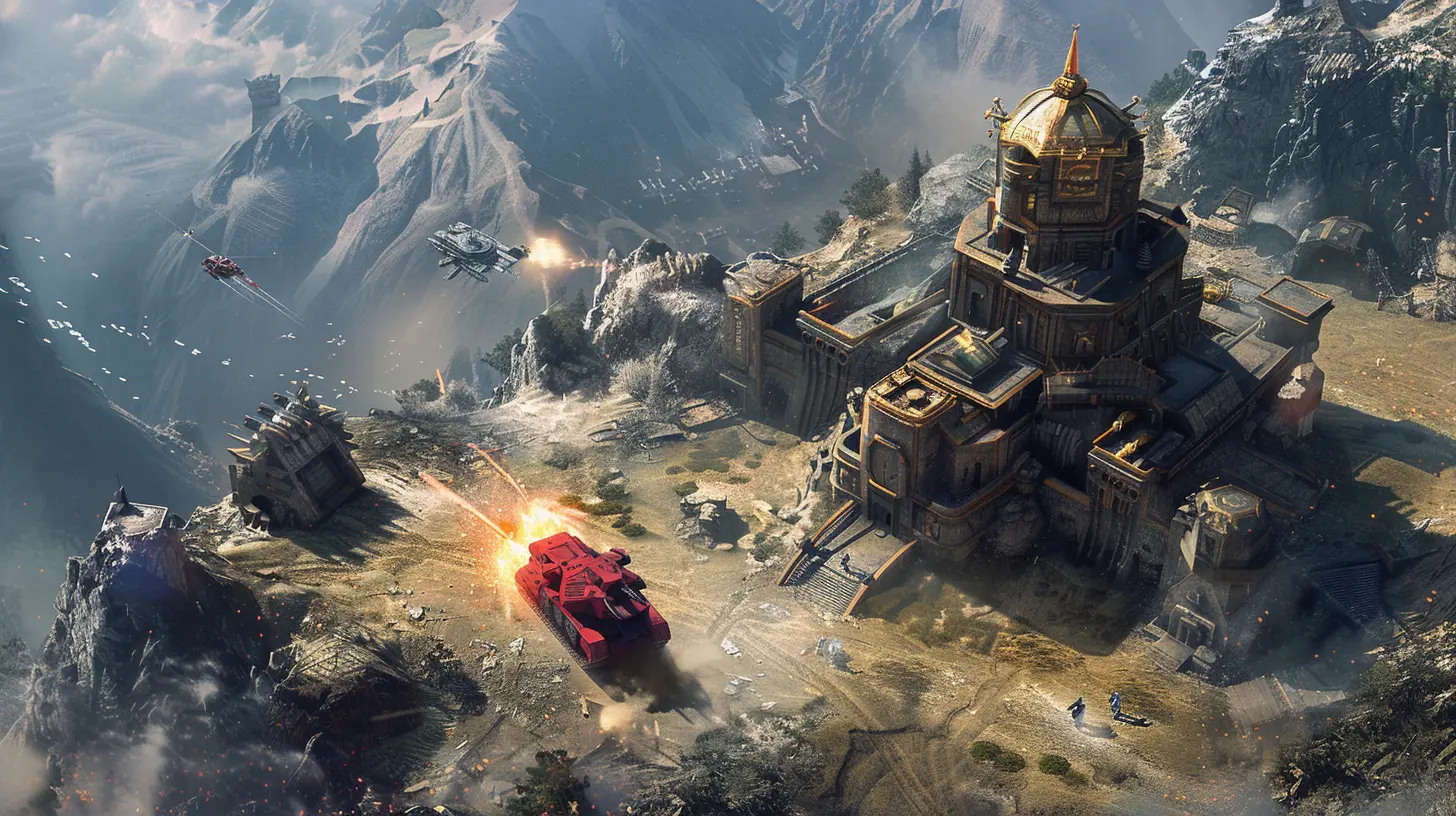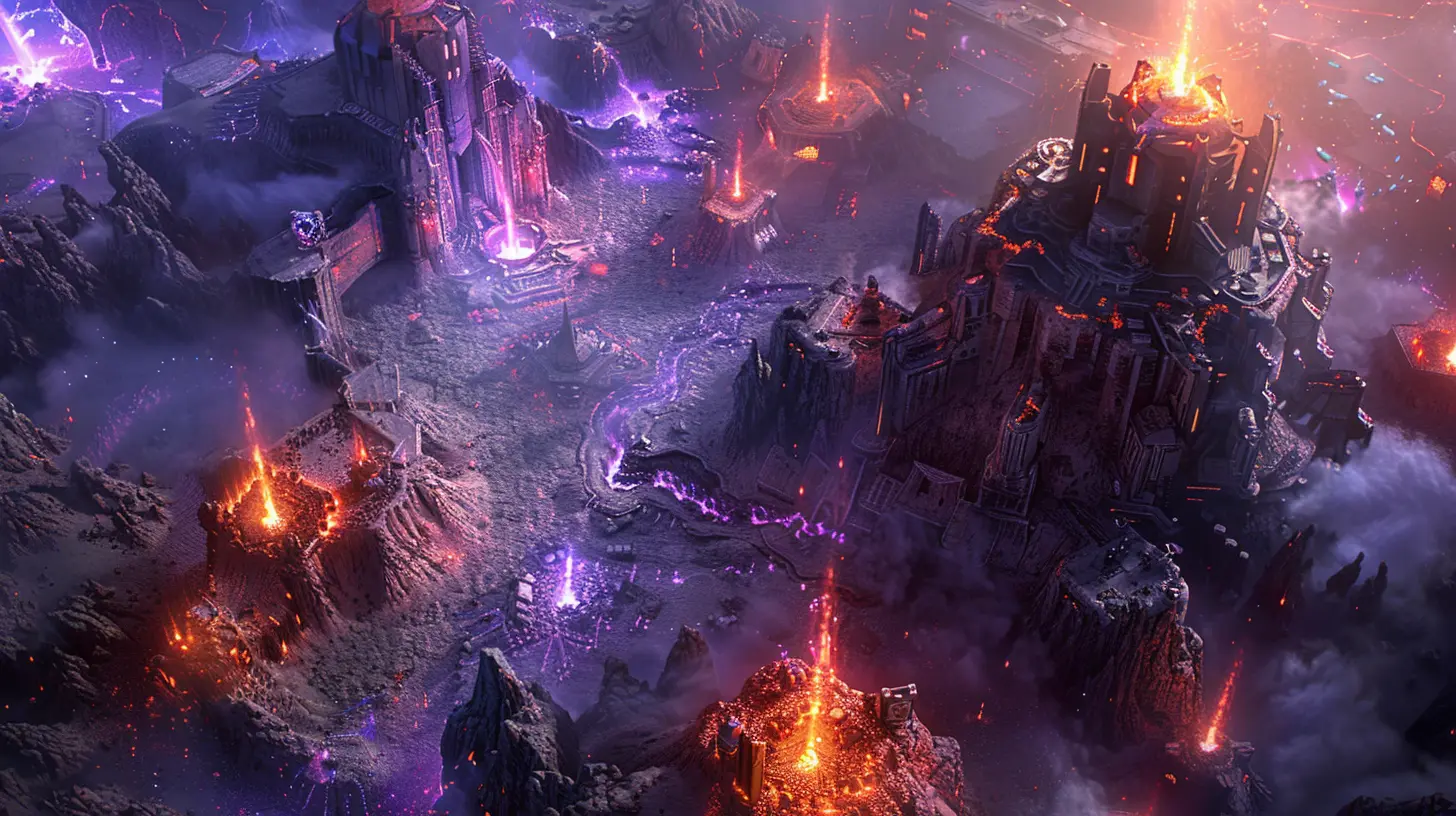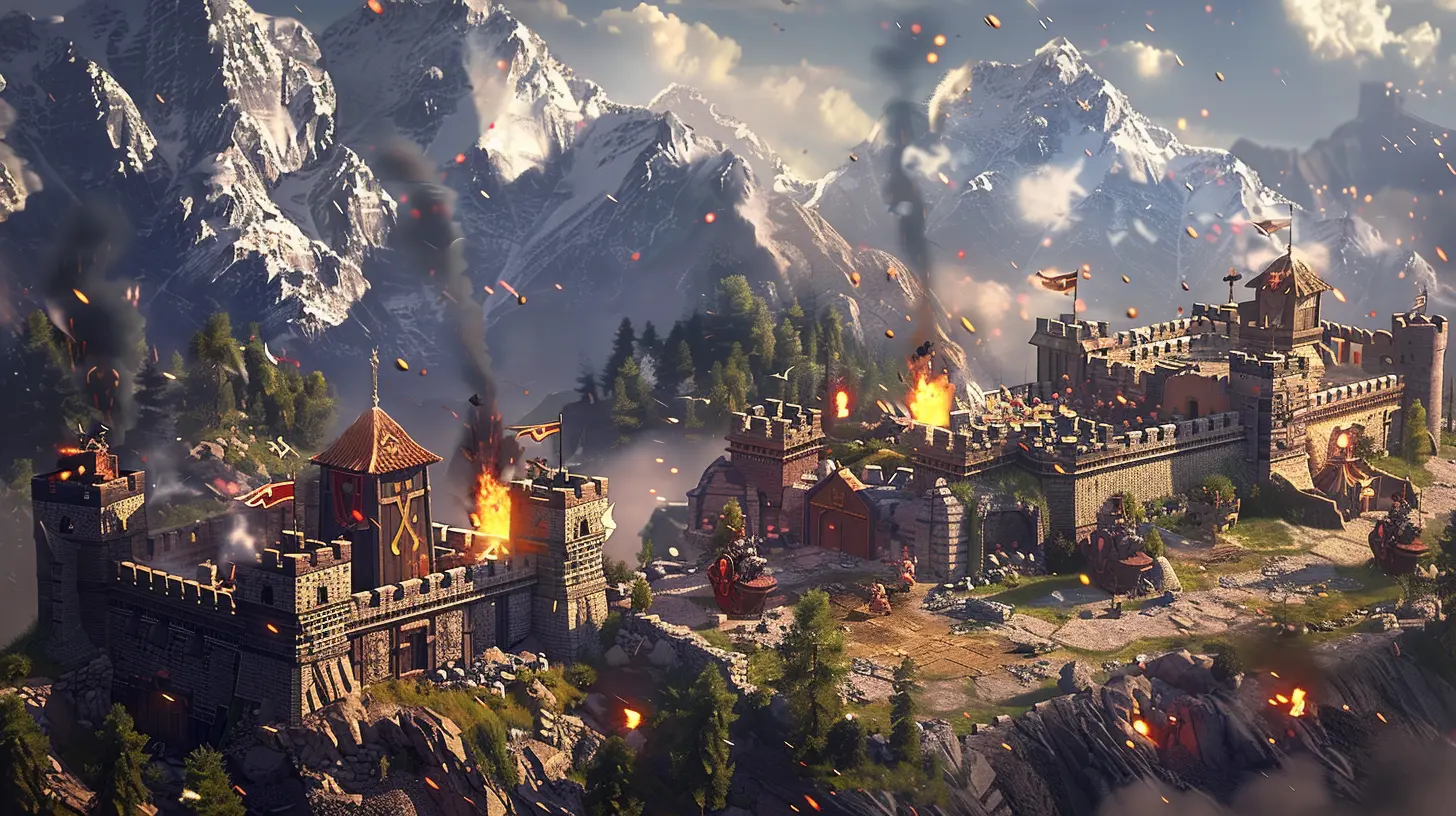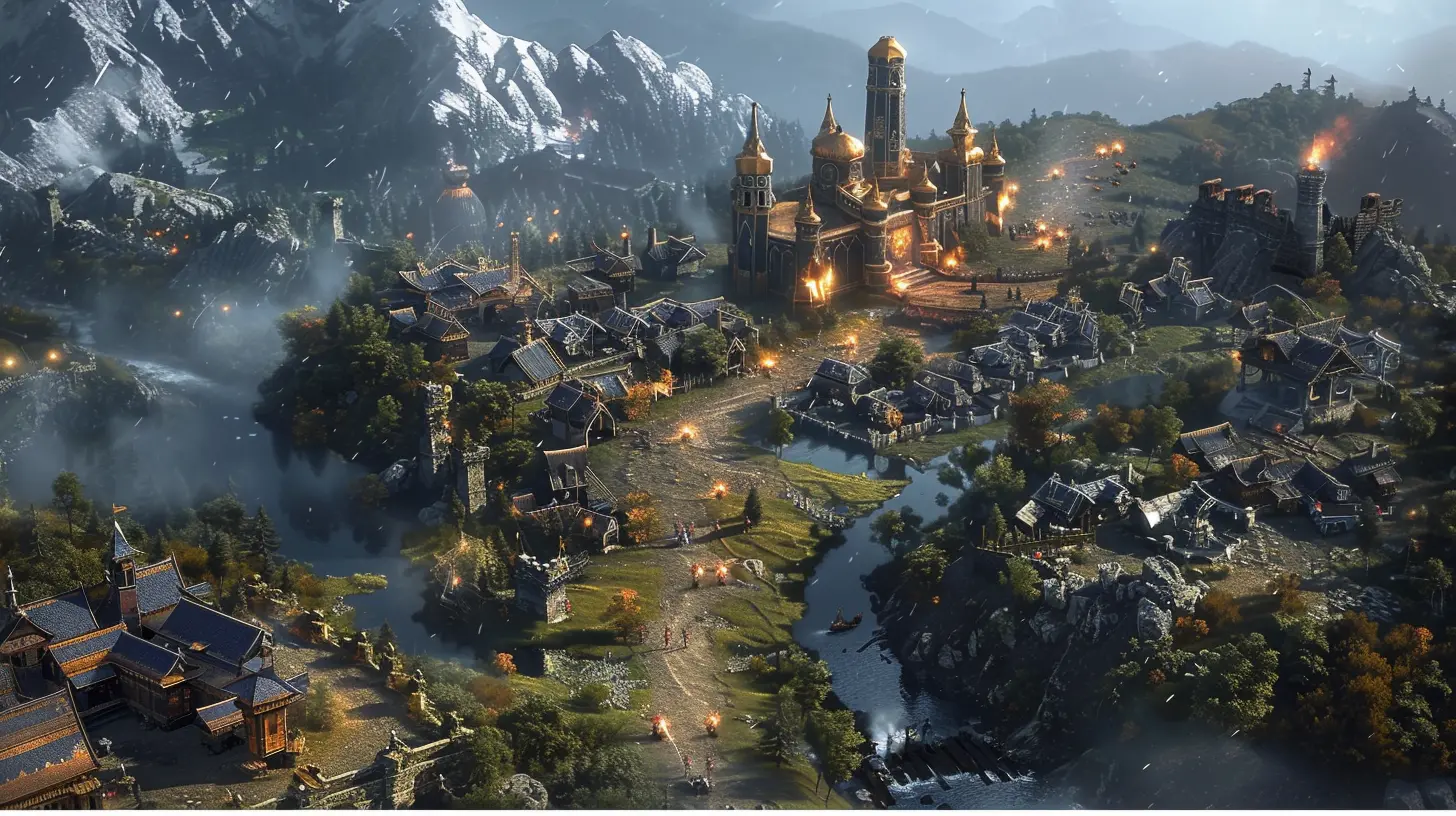How to Dominate the Early Game in Competitive RTS
11 June 2025
Alright, fellow click-happy warlords, let’s get down to business.
If you're diving into the wonderfully intense world of Real-Time Strategy (RTS) games and wondering why you keep getting steamrolled before your second barracks is even up, you're not alone. The early game in an RTS match is like the opening move in chess — but on rocket fuel. It sets the tone, determines your options, and could even give you the edge to crush your opponent before they get their pants on.
In this guide, we’ll break down the science, chaos, and occasional panic of mastering the early game in competitive RTS. Think of this as your guide to becoming the Sun Tzu of snack-sized strategy warfare.
Why the Early Game is Everything
Let’s be real for a second: No one wants to spend 15 minutes building up an empire only to get blind-sided by an aggressive cheese rush, right?In RTS, the early game isn’t just a warm-up. It’s the foundation of your strategy, your economy, and your tempo. If you mess up the early game, your mid-game options shrink like cotton in a hot wash. But if you nail it? You're basically snowballing into an avalanche of doom headed straight for your opponent’s base.
Step 1: Know Thy Build Order Like You Know Your Coffee Order
Okay, first things first — build orders. These are like your morning routines but with less caffeine and more economic efficiency.Every competitive RTS has its meta build orders tailored around resource collection, unit production, and timing. Whether you're playing StarCraft, Age of Empires, or Total Annihilation's resurrected cousin, the importance of a tight build order can’t be overstated.
Tips to Master Build Orders:
- Pick one and stick to it. Changing builds every game is like trying to learn 5 instruments at once. You’ll end up making noise, not music.- Practice it in single-player. No shame in rehearsing your timings like you're preparing for a Broadway show.
- Benchmark everything. Know when your first barracks goes down, when to expand, and when to hit key population milestones.
A good build order isn’t just about speed — it’s about efficiency. You're trying to squeeze every drop of juice out of those starting workers.
Step 2: Scout Like Your Virtual Life Depends On It — Because It Does
You could follow the most flawless build order known to the RTS gods, but if you’re flying blind, it's all for nothing.Scouting is your early warning system. It helps you understand what your opponent is planning and how best to counter it. Are they going for a fast tech? Are they building an army three times the size of yours already?
Scouting Like a Pro:
- Scout early and often. Send your first unit out to get a peek at the enemy’s base. Better to lose one scout than your whole army.- Watch timings. Did they build their second structure fast? That smells like aggression.
- Stick around (safely). Use ranged units or fast units to keep tabs as long as possible.
Imagine playing poker but seeing your opponent’s cards. That’s scouting. Do it.
Step 3: Economy is King (and Queen, and Everything Else)
Here’s a hot take: Your economy is more important than your kill count. Shocking, right?If you can outproduce your opponent, you can outfight them — plain and simple. The earlier you can stabilize and grow your economy without compromising safety, the better your chances at not just surviving the early game but turning it into a solid mid-game snowball.
Economic Tips:
- Minimize idle workers. Every second they stand still, you're bleeding resources.- Expand at the right time. Too early and you’re vulnerable. Too late and you're behind.
- Balance your resources. Don’t end up with 2,000 wood and no gold. Unless you're planning a very weird strategy...
Treat your economy like a garden — water it, watch it grow, and eventually, eat your enemies with it.
Step 4: Don’t Turt– I Mean, Don't Over-defend
It’s so tempting, right? The moment you get attacked early on, you pack your base with walls, towers, and defensive units. Next thing you know, you’ve invested half your economy into preventing an attack that may never come again.Look, I get it. No one likes getting surprise-rushed. But going full turtle-mode can stall your growth and cost you the game.
Here’s A Better Plan:
- Defend smart, not hard. Use choke points and high ground for your advantage.- Keep mobile defense units. They can handle small raids and still support offensive moves.
- Scout after defense. If you repelled an early attack, don’t just sit there. Attack back or take a greedy expansion.
Think of defense like airbags in a car. You want them there, but you don’t drive around with them inflated all the time.
Step 5: Apply Pressure Like a Chef with a Garlic Press
Remember the best defense is a good offense? Yeah, that’s especially true in early RTS gameplay.Applying early pressure can completely throw off your opponent’s game. Even if you don’t win outright, you can delay expansions, force bad trades, and put them into a reactive mindset — aka, playing on your terms.
Early Aggression Ideas:
- Small, fast units. Harass their workers, interrupt their build orders.- Fake pressure. Make a small attack look big — force a reaction without real investment.
- Take map control. Secure resources, vision, and strategic areas.
Pressure doesn’t always mean going for the throat. Sometimes, it’s just slowly tightening the noose until they panic and make mistakes.
Step 6: Timing Attacks — AKA, The Art of Well-Planned Mayhem
Here's where things get sexy.A good timing attack is like catching your opponent with their pants down. It’s a well-coordinated strike that hits precisely when you’re strongest — and they’re not ready.
How to Nail Your Timing:
- Based on power spikes. Did you just get a new tech unit? Upgrade unlocked? That’s your cue.- Exploit scouting info. Did you see they’re going greedy? Punish it.
- Avoid attacking uphill... unless you need drama.
Timing attacks are your mic-drop moment. Get in, make an impact, and either cripple their economy or wipe out a key structure. Then, get out unless you can finish the job.
Step 7: APM is Great, but Decisions Win Games
Yes, high APM (Actions Per Minute) looks flashy. Clicking 300 times a minute might make you feel like a Korean esports prodigy. But unless those clicks are meaningful, it’s just fancy noise.Focus on decision-making efficiency over raw speed. Knowing where to position your units, when to transition tech, or when to expand is way more valuable than speed-clicking your barracks.
Get better at this by:
- Watching replays. Find bad decisions, not just slow ones.
- Pausing mid-game in single matches. Ask yourself: “What should I be doing now?”
- Learning from others. Watch pro replays or Twitch streams and see how they make decisions in real-time.
In the end, APM is your tool — not your identity. You’re not a typewriter; you're a general.
Step 8: Mind Games and Misdirection — Welcome to the Dark Arts
Why play fair when you can play smart?Remember that RTS is as much a mental game as it is mechanical. Throwing in some misdirection — fake rushes, proxy buildings, unexpected tech switches — can genuinely tilt your opponent or make them overreact.
Example:
- Fake an early rush → they over-defend → you expand safely.
- Hide tech buildings → surprise them with a rare unit comp.
- Feint at one base → drop in the other with actual army. Classic.
Get in their head, and you’ve already won half the battle.
Practice Makes Perfect (and then Some)
Let’s be blunt: You’re going to lose. A lot. Especially when trying new early-game strategies.The goal here isn’t perfection — it’s progression. Domination comes from repetition, adaptation, and a sprinkle of rage-quitting (hopefully by your opponent).
Tips for Practicing Early Game:
- Use hotkeys and control groups. Your hands should fly on autopilot — like a piano player in a duel.- Play vs AI to test new builds. No judgment. Just you and your glorious experiment.
- Review your replays. Find your weak points, fix them, repeat.
Think of practice like grinding in an RPG. Every game gained is XP. Eventually, you level up to Smurf-slayer status.
Conclusion: Early Game Domination = Confidence + Chaos
The early game in competitive RTS is where legends are born… or broken in brutal, five-minute surrenders.But here’s the secret sauce — dominating the early game isn’t about memorizing a thousand things or playing like a robot. It’s about understanding the rhythm, the flow, and the psychology of your opponent. It’s about confidently executing your plan, adapting when things go sideways, and clicking with purpose.
So the next time you drop into a match, take a breath, look your opponent square in their virtual eyes, and show them what domination really looks like.
Now go forth, Commander. The early game is yours for the taking.
all images in this post were generated using AI tools
Category:
Game StrategiesAuthor:

Whitman Adams
Discussion
rate this article
3 comments
Zia Brooks
Great insights! Mastering the early game really sets the tone for victory. Keep pushing those strategies!
June 22, 2025 at 2:34 AM

Whitman Adams
Thank you! I appreciate your support and I'm glad you found the insights valuable. Let's keep improving our strategies together!
Claire Underwood
Solid tips! Early game strategy is crucial for victory.
June 18, 2025 at 3:18 PM

Whitman Adams
Thank you! I'm glad you found the tips helpful—early game strategy truly sets the stage for success!
Lys McIntire
Mastering the early game in RTS is like breakfast—skip it, and you'll be left with a hungry opponent snacking on your hopes! Remember, a well-placed build order beats a late-game rush any day. Now go, conquer those strategic muffins!
June 15, 2025 at 3:52 AM

Whitman Adams
Great analogy! Mastering the early game is crucial for setting up a solid foundation. Thanks for the encouragement—I'll make sure to prioritize those strategic muffins!



